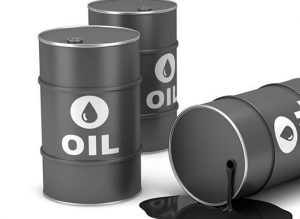Global Dividend Growth Slows in Q3 Amid Oil and Mining Sector Cuts -Report

Global dividend payouts experienced a modest decline in the third quarter, falling 0.9% on a headline basis, as companies grappled with volatile commodity prices.
This slowdown was primarily driven by cuts in the oil and mining sectors, according to Janus Henderson’s global dividend index.
However, when factoring in currency movements and special dividends, underlying payouts rose by 0.3%, indicating that the overall trend in corporate dividend distributions remains positive.
Nine out of ten companies maintained or increased their dividend payments, while the remaining 10% implemented cuts.
Underlying growth
According to Financial Times, two outsized dividend cuts depressed the overall rate of underlying growth, which would otherwise have hit 5.3%.
Brazilian oil producer Petrobras paid $9.6 billion less year-on-year, the biggest dividend cut in the world for the second quarter in a row.
Australian miner BHP cut its payouts by $6.9 billion, due to sharply falling profits as a result of lower commodity prices. BHP was the world’s largest dividend payer in 2021 and 2022.
Other Australian mining companies, including Rio Tinto and Fortescue Metals, also slashed their payouts.
The report noted that more than half of all mining companies reduced dividends, with some moving away from “progressive” dividend policies, under which they commit to expanding their payouts each year.
“Dividend growth from companies generally remains strong across a wide range of sectors and regions, except commodity-related sectors, such as mining and chemicals,” said Ben Lofthouse, head of global equity income at asset manager Janus Henderson. “It is quite common and well-understood by investors that commodity dividends will rise and fall with the cycle, however.”
Headline growth is the amount paid in any quarter compared with the previous year. It can be inflated by one-off payments when companies make unusually high profits or dispose of assets.
Since the COVID-19 pandemic, companies have paid them to catch up on payouts they missed during the period.
Underlying growth takes into account currency movements, special dividends, timing changes, and index changes.
In the UK, underlying payouts rose by 1.5%. Though growth was held back by severe cuts in the mining sector, Glencore was an exception. Over half of the non-mining companies delivered double-digit returns, driven by banks, oil companies, and utilities.
Banks are the biggest contributor to dividend growth: Banks: which have boosted profits amid high interest rates, were the biggest contributor to dividend growth in the third quarter, adding $5.8 billion or 9.3% year-on-year.
Janus Henderson’s Jane Shoemake, a client portfolio manager, said that banks have been “playing catch-up post-regulation and the pandemic,” and that regulated, inflation-linked sectors like utilities “don’t grow particularly” but “are steady players.”
China’s oil and gas sector pushed the country’s dividends to record highs in the third quarter, despite remaining sluggish in other sectors.
Chinese payouts rose 7.8% on an underlying basis, reaching $38.2 billion.
The growth was led by PetroChina, which more than doubled its year-on-year dividend to $6.5 billion.
However, the oil and gas sector’s growth masked weakness elsewhere, with cuts at China’s biggest dividend payer, China Construction Bank, along with distressed property companies like Country Garden Holdings.
Janus Henderson’s overall forecast for the year has dropped from $1.64 trillion to $1.63 trillion. The new estimate would represent a 4.4% increase in dividends for 2022.
The US, France, Canada, Switzerland, and China are on track to deliver record payments this year.









